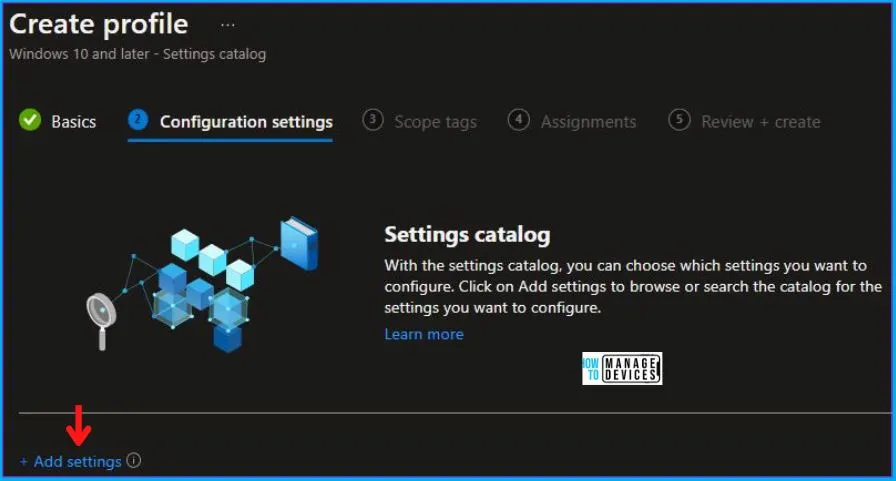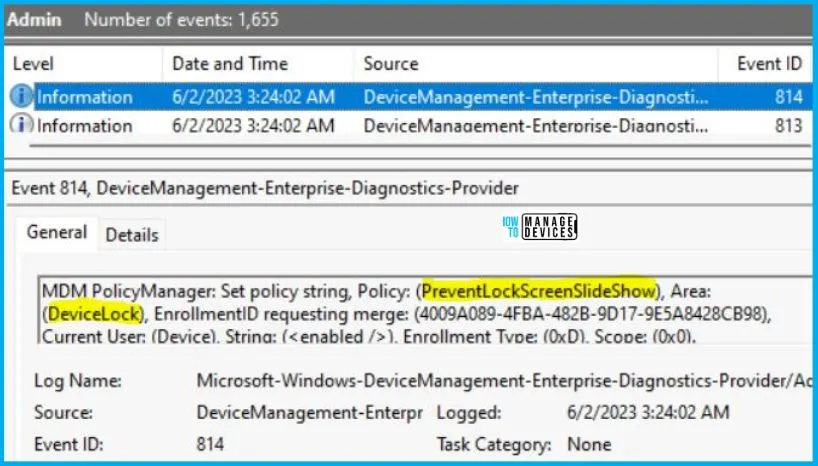This article focuses on understanding and implementing the Disable Lock Screen Slide Show Policy Using Intune. We will explore how to apply this policy using Intune’s Configuration Profiles. The main goal is to acquire understanding and hands-on experience in effectively configuring and controlling the Lock Screen Slide Show Policy using Intune.
Disable Lock Screen Slide Show Policy Using Intune setting disables the lock screen slide show feature in PC Settings and prevents any slide show from playing on the lock screen. By default, users have the ability to enable a slide show that initiates after locking the device. However, enabling this setting will restrict users from modifying slide show settings in PC Settings, and no slide show will ever be activated.
However, there may be instances where you want to disable this functionality and prevent any slide show from appearing on the lock screen. This could be for security reasons, to maintain a consistent lock screen appearance, or to optimize system performance.
By implementing the “Disable Lock Screen Slide Show” policy using Intune or a similar management tool, you can control this feature centrally across multiple devices. Once enabled, users will no longer be able to modify slide show settings through the PC Settings interface.
Furthermore, this policy ensures that no slide show will ever start on the lock screen, regardless of user preferences or system configurations. This can help maintain a more secure and controlled lock screen environment.
It’s important to note that this policy setting specifically targets the lock screen slide show feature and does not impact other lock screen functionalities or settings.
Windows CSP Details PreventLockScreenSlideShow
We will see Windows CSP Details for this Policy setting PreventLockScreenSlideShow. The feature described here pertains to the lock screen slide show settings on a computer. Normally, users have the option to enable a slide show that starts playing on the lock screen after they lock the machine. This slide show can consist of images, graphics, or other visual content.
CSP URI – ./Device/Vendor/MSFT/Policy/Config/DeviceLock/PreventLockScreenSlideShow

Disable Lock Screen Slide Show Policy Using Intune
To apply Disable Lock Screen Slide Show Policy Using Intune, follow the steps stated below:
- Sign in to the Intune Admin Center portal https://intune.microsoft.com/.
- Select Devices > Windows > Configuration profiles > Create a profile.
In Create Profile, Select Windows 10 and later in Platform, and Select Profile Type as Settings catalog. Click on Create button.
| Platform | Profile Type |
|---|---|
| Windows 10 and later | Settings Catalog |

On the Basics tab pane, provide a name for the policy as “Disable Lock Screen Slide Show Policy.” Optionally, you can enter a description for the policy, and then proceed by selecting “Next.

Now in Configuration settings, click Add Settings to browse or search the catalog for the settings you want to configure.

In the Settings Picker windows, search by the keyword Lock Screen, among many settings, choose Administrative Templates\Control Panel\Personalization, and select this.
When you select the option as stated above, you will see many options, out of which is Prevent enabling lock screen slide show. After selecting your setting, click the cross mark at the right-hand corner, as shown below.

Now, in the Administrative Templates, set Prevent enabling lock screen slide show to Enabled, as shown below in the image.

Using Scope tags, you can assign a tag to filter the profile to specific IT groups. One can add scope tags (if required) and click Next to continue. Now in Assignments, in Included Groups, you need to click on Add Groups, choose Select Groups to include one or more groups, and click Next to continue.

In the Review + Create tab, you need to review your settings. After clicking on Create, your changes are saved, and the profile is assigned.

Upon successfully creating the “Disable Lock Screen Slide Show Policy,” a notification will appear in the top right-hand corner, confirming the action. You can also verify the policy’s existence by navigating to the Configuration Profiles list, where it will be prominently displayed.
Your groups will receive your profile settings when the devices check in with the Intune service. The Policy applies to the device.
Intune Report for Disable Lock Screen Slide Show Policy
From Intune Portal, you can view the Intune settings catalog profile report, which provides an overview of device configuration policies and deployment status.
To track the assignment of the policy, you need to select the relevant policy from the Configuration Profiles list. By reviewing the device and user check-in status, you can determine if the policy has been successfully applied. If you require more detailed information, you can click on “View Report” to access additional insights.

Intune MDM Event Log
To verify the successful implementation of String or integer policies on Windows 10 or 11 devices through Intune, you can leverage event IDs 813 and 814. These event IDs provide valuable insights into the application status of the policy as well as the specific value assigned to the policy on those devices. In the case of this particular policy, the value is a String and is linked to the event ID 814.
By analyzing these event IDs, you can gain a clear understanding of the policy’s application status and the corresponding value associated with it on the devices in question.
To confirm this, you can check the Event log path – Applications and Services Logs – Microsoft – Windows – Devicemanagement-Enterprise-Diagnostics-Provider – Admin.
MDM PolicyManager: Set policy string, Policy: (PreventLockScreenSlideShow), Area: (DeviceLock), EnrollmentID requesting merge: (4009A089-4FBA-482B-9D17-9E5A8428CB98), Current User: (Device), String: (<enabled/>), Enrollment Type: (0xD), Scope: (0x0).

By reviewing the above log entry in the Event Viewer, you will come across essential information, including the Area and Enrollment ID. These details play a significant role in identifying the corresponding registry path. To locate the specific information, please consult the table provided below:
| Area | Policy | String | Scoped | Event ID |
|---|---|---|---|---|
| DeviceLock | PreventLockScreenSlideShow | Enabled | Device | 814 |
The details presented in the table above for the Disable Lock Screen Slide Show Policy Using Intune can be employed to access the registry settings that hold the group policy configurations on a specific computer. To accomplish this, you can execute “REGEDIT.exe” on the target computer and navigate to the precise registry path where these settings are stored.
- Computer\HKEY_LOCAL_MACHINE\SOFTWARE\Microsoft\PolicyManager\providers\4009A089-4FBA-482B-9D17-9E5A8428CB98\default\Device\DeviceLock
When you navigate to the above path in the Registry Editor, you will find the registry key with the name PreventLockScreenSlideShow. Refer to the table and image below.
| Registry Name | Value |
|---|---|
| PreventLockScreenSlideShow | 1 |

Author
Abhinav Rana is working as an SCCM Admin. He loves to help the community by sharing his knowledge. He is a B.Tech graduate in Information Technology.
